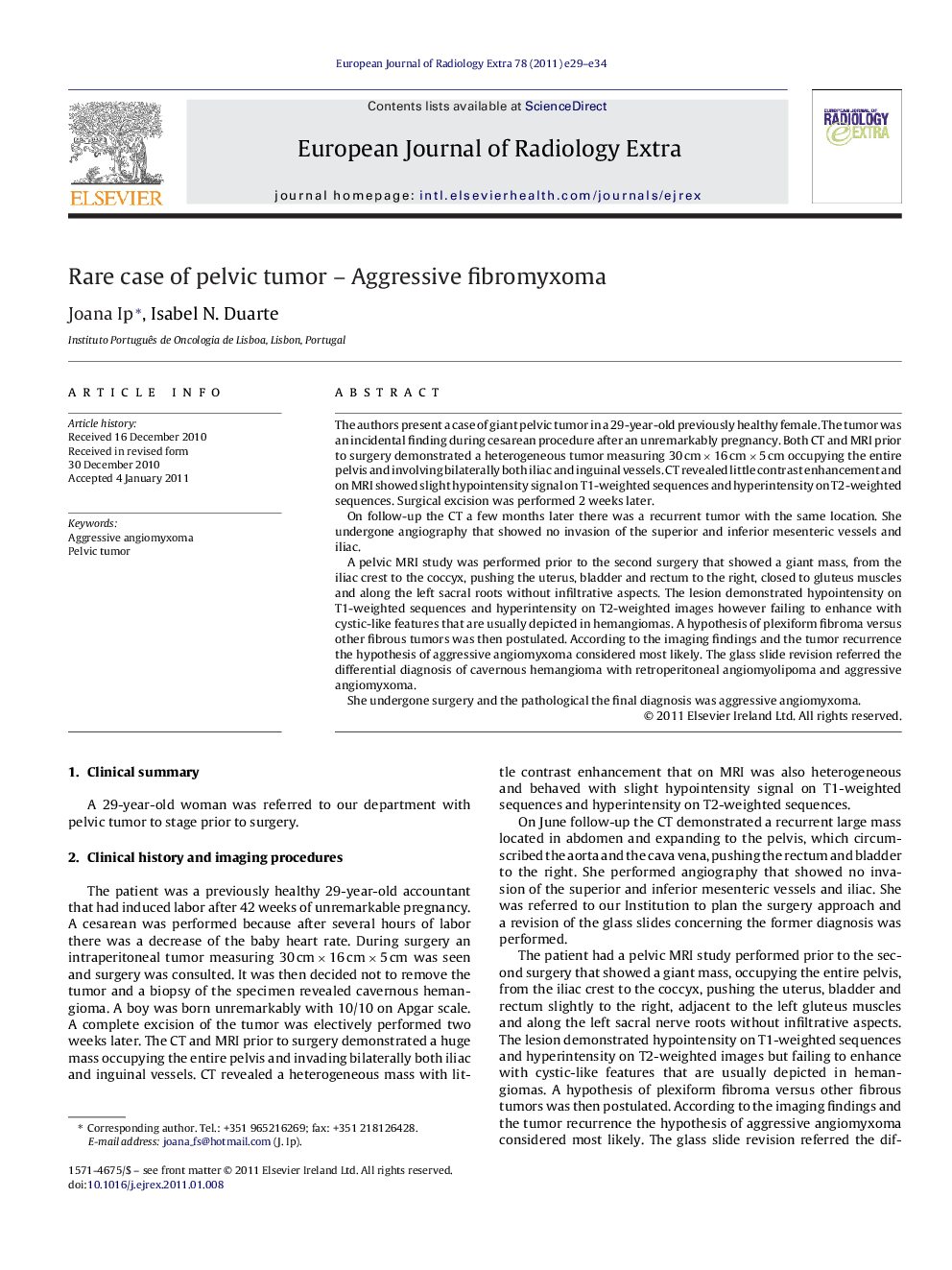| Article ID | Journal | Published Year | Pages | File Type |
|---|---|---|---|---|
| 4228918 | European Journal of Radiology Extra | 2011 | 6 Pages |
The authors present a case of giant pelvic tumor in a 29-year-old previously healthy female. The tumor was an incidental finding during cesarean procedure after an unremarkably pregnancy. Both CT and MRI prior to surgery demonstrated a heterogeneous tumor measuring 30 cm × 16 cm × 5 cm occupying the entire pelvis and involving bilaterally both iliac and inguinal vessels. CT revealed little contrast enhancement and on MRI showed slight hypointensity signal on T1-weighted sequences and hyperintensity on T2-weighted sequences. Surgical excision was performed 2 weeks later.On follow-up the CT a few months later there was a recurrent tumor with the same location. She undergone angiography that showed no invasion of the superior and inferior mesenteric vessels and iliac.A pelvic MRI study was performed prior to the second surgery that showed a giant mass, from the iliac crest to the coccyx, pushing the uterus, bladder and rectum to the right, closed to gluteus muscles and along the left sacral roots without infiltrative aspects. The lesion demonstrated hypointensity on T1-weighted sequences and hyperintensity on T2-weighted images however failing to enhance with cystic-like features that are usually depicted in hemangiomas. A hypothesis of plexiform fibroma versus other fibrous tumors was then postulated. According to the imaging findings and the tumor recurrence the hypothesis of aggressive angiomyxoma considered most likely. The glass slide revision referred the differential diagnosis of cavernous hemangioma with retroperitoneal angiomyolipoma and aggressive angiomyxoma.She undergone surgery and the pathological the final diagnosis was aggressive angiomyxoma.
